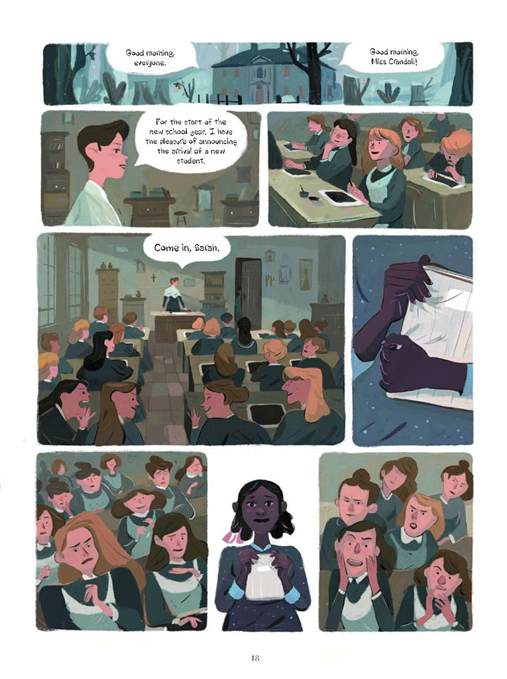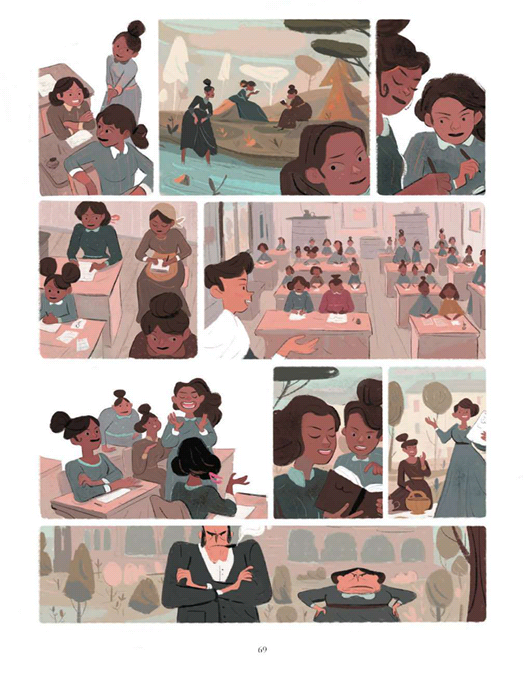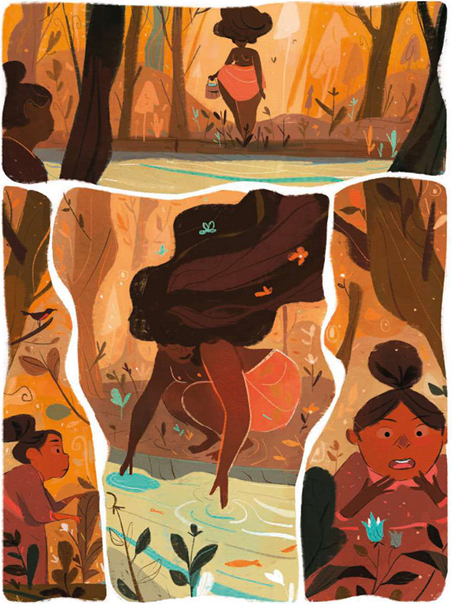 White All Around
White All Around
Writer: Wilfrid Lupano
Artist: Stéphane Fert
Lettering: Cromatik, Ltd.
Translation: Montana Kane
Digital Editor: Anna Howell
Original Publisher: Dargaud
Digital, English-Language Publisher: Europe Comics
7,49 € (~$9.06)
To honor Women’s History Month and International Women’s Day, I wanted to read a non-fiction comics celebrating heroic — not superheroic — women. I don’t believe it was just super women that brought about better gender equality. Everyday women, including and especially women of color and LGBTQ+ women, have and continue to fight for their inherent rights through living in a prejudiced society. Hence my interest in Wilfrid Lupano and Stéphane Fert’s White All Around, published by Europe Comics. The true story about a brave woman who founded one of the first schools to educate Black girls in the United States was exactly the heroic woman’s tale I was looking for. What I received was quite different.
It is 1832 in Canterbury, Connecticut, and Miss Prudence Crandall is the respected head of the Canterbury Female Boarding School. One day, Sarah, a local Black girl, wonders why a stick submerged in a stream appears to bend. Despite the disinterest of her friend and the taunting of a local Black boy who calls himself Feral, Sarah takes her curiosity to the desk of Miss Crandall about the question. Crandall leans forward smiling and asks “Sarah…what do you really want to ask me?” From here, Sarah integrates the academy. This angers the proud residents of Canterbury. The adults grasp at straws to justify their outrage, from worrying about the honor of the white girls and the safety of their community to worrying about what an educated Black woman will do in society. Prudence Crandall’s response to her community’s disgust is to close down her school — and reopen it as a school solely for Black girls. Crandall is able to draw several Black girls from across the country, all yearning for an education. Through increasing acts of verbal and physical intimidation, these brave Black schoolgirls soldier on.
The racism the school and its students experience is disturbing in its cruelty but not surprising in its existence. White All Around does a good job of highlighting Northern racist tactics: lynching trees, fiery crosses, and klan hoods supplanted by anonymous acts of violence, legislation, and litigation (The acts do become more desperate and lethal as the story progresses). What did surprise me, however, was that White All Around does not center this story around the white characters. Instead, White All Around is about Sarah, Maria, and their fellow student. Their joy, fear, differences, and determination center White All Around. This informs — and elevates — the comic.
Fert’s artwork is stunning and singular; the best way I can describe it is as a mash-up of European Post-Impressionism and New England Primitive Folk Art. With its lack of traditional black linework and panels and its abundance of expressive brushwork and a muted but colorful palette, this is very capital-A Art. However, rather than being an art style meant to be seen from a distance, Fert’s artwork is enticing. From Sarah’s penetrating gaze as she waits for Crandall to explain refraction to the bright flowers crowning student Eliza as she lies on the forest floor, the detailed artwork radiates emotion and atmosphere. Weeks after first reading White All Around, certain panels are still ingrained in my corneas: Sarah’s wail after an encounter with two white men, the girls’ pink pupils as they react to local eccentric Miriam calling them witches. The artwork turns these characters into fully-fleshed individuals. Fert is given space to do so, and this is partly due to Lupano’s masterful plotting.
Lupano is a generous collaborator: the number of silent panels and pages are testament alone to that. He is also a brave writer: an instinct for comics writers adapting biographies to the comics medium is to simple tell the story via the medium. The desire to be thorough and respectful of subject matters is understandable, but can lead to over-written or just plain dull comics. Lupano avoids this by having the medium, not the writing, tell the story. A consequence of this is that he touches on a number of themes without mooring the plot to them. One theme is the effects of Nat Turner’s Rebellion. Turner serves as a boogeyman to the white residents of Canterbury and a folk hero to Feral, who opens the story reciting from memory a passage from The Confessions of Nat Turner. While never a character, Nat Turner serves as a spectre across the story, highlighting the actual effects of this event better than any history textbook I ever read.
Another theme is the consequences of educating Black people in the Western (white) tradition. Not only do the white residents argue this, but so does Feral in a tussle with Sarah. He articulates the fear of assimilation and loss of cultural identity well; Sarah adapts this argument later, and it leads Crandall to question her own teaching. This complicates contemporary understanding of what education meant in the past. It also adds nuance to Feral, a character who could have been a picaninny but is instead the emotional heart of the story. These themes as well as the others (especially one on paganism and wicca) add layers to the story, making the story more relevant and real.
I was genuinely haunted by this comic. More than just being yet another tragic comic about tragic Black people, White All Around shows what becomes of the girls after the school. It justifies the fears of the Canterburians in the best way possible. It is an excellent companion to Europe Comics’ Eisner-nominated Colored: The Unsung Life of Claudette Colvin. This is so far the best comics I have read this year: White All Around’s visual and textual nuance portrays the horrors, determination, and humanity of these young Black girls. Prudence Crandall and the girls are portrayed as heroic by maintaining their humanity and joy in one another in an unjust, evil society. I cannot recommend a better story for International Women’s Day 2021 or any other day of any other year.
Published in English by Europe Comics, White All Around is available now.


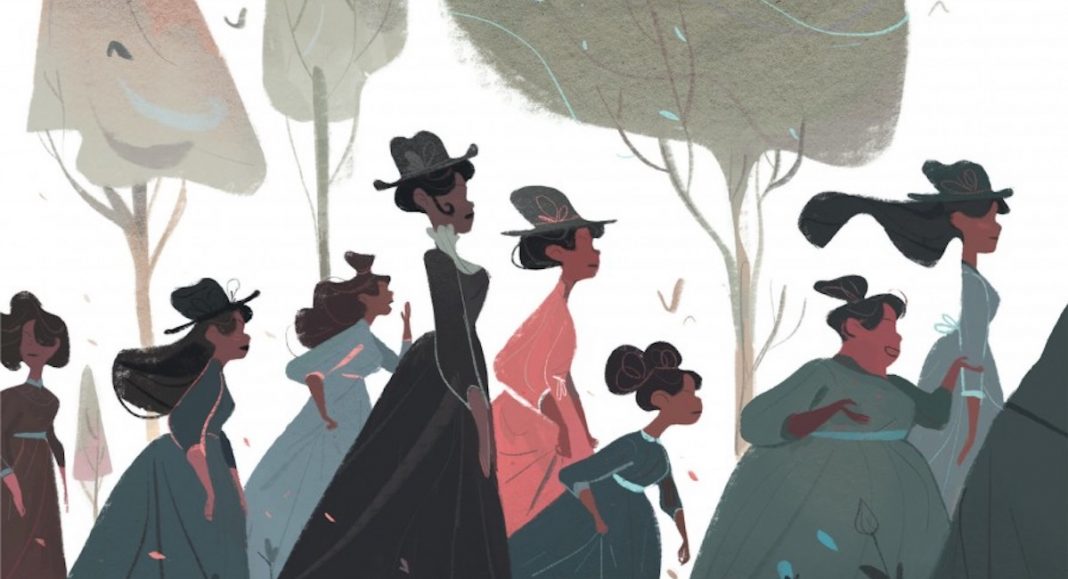
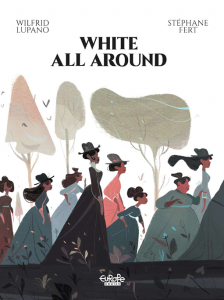 White All Around
White All Around